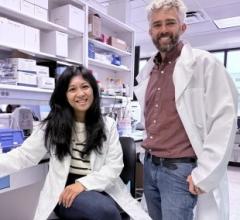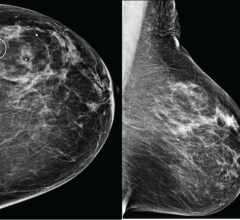January 2, 2013 — The lifetime risks of cancer from medical radiation may be overemphasized relative to more immediate health risks, according to a new clinical study published online in the journal Radiology.
Radiation exposure from computed tomography (CT) and other medical sources has drawn considerable media attention in recent years. Stories warning of the dangers often focus on the lifetime risk estimates of radiation-induced cancer from repeat examinations. This approach has limitations, said Pari V. Pandharipande, M.D., M.P.H., abdominal and genitourinary imaging specialist at Massachusetts General Hospital and Harvard Medical School in Boston, especially in regard to clinical decision making.
Physicians often order imaging exams to diagnose, treat or monitor life-threatening conditions. The immediate or near-term risk of death from the condition should be taken into account when weighing the benefits of an exam against a potential future risk of radiation-induced cancer from imaging.
“This must be considered when physicians make imaging decisions for their patients, because the timing of risks changes their relevance,” Pandharipande said. “Risks incurred later in life are not the same as those faced in the present. If you had to choose between the chance of incurring a serious risk now or later in life, most people would choose the latter.”
Pandharipande and colleagues recently used CT radiation dose data and mathematical models to better understand the risk-benefit dynamic of medical radiation. They projected outcomes for testicular cancer patients who undergo CT surveillance in the decade after orchiectomy, or removal of the testicle.
“Testicular cancer affects younger men, and patients treated for early-stage cancer receive several CT scans during surveillance,” Pandharipande said. “These patients do very well, but they have a greater risk of radiation-induced cancer later in life.”
Based on the results of their analysis, the researchers projected that 33-year-old men with early-stage cancer who undergo CT surveillance incur a slightly higher lifetime mortality risk from testicular cancer compared with potential radiation-induced cancers. Because the testicular cancer risk was more immediate, life expectancy loss attributable to testicular cancer was more than three times greater than life expectancy loss attributable to radiation-induced cancers.
The trends were consistent across all the scenarios studied, and put forth a useful concept to help physicians with decision making.
“Radiation-induced cancer risks, often discussed at the population level, can be challenging to conceptualize and apply to imaging decisions that have to be made at the patient level,” Pandharipande said. “We as physicians can benefit from dedicated educational efforts to improve decision making and better convey the risks to patients.”
Although the study focused on testicular cancer patients, concepts pertaining to the timing of radiation-induced cancer risk translate to other scenarios where CT is needed to avert a more immediate health risk, Pandharipande noted.
“Patients with Testicular Cancer Undergoing CT Surveillance Demonstrate a Pitfall of Radiation-induced Cancer Risk Estimates: The Timing Paradox.” Collaborating with Pandharipande were Jonathan D. Eisenberg, B.A., Richard J. Lee, M.D., Ph.D., Michael E. Gilmore, M.B.A., Ekin A. Turan, B.S., Sarabjeet Singh, M.D., Mannudeep K. Kalra, M.D., Bob Liu, Ph.D., Chung Yin Kong, Ph.D., and G. Scott Gazelle, M.D., M.P.H.
For more information: RadiologyInfo.org.


 December 10, 2025
December 10, 2025 









